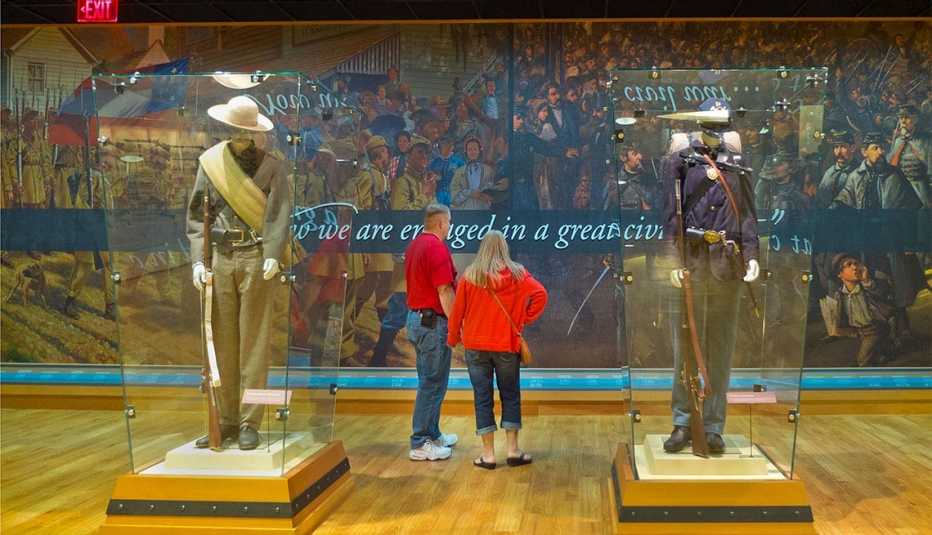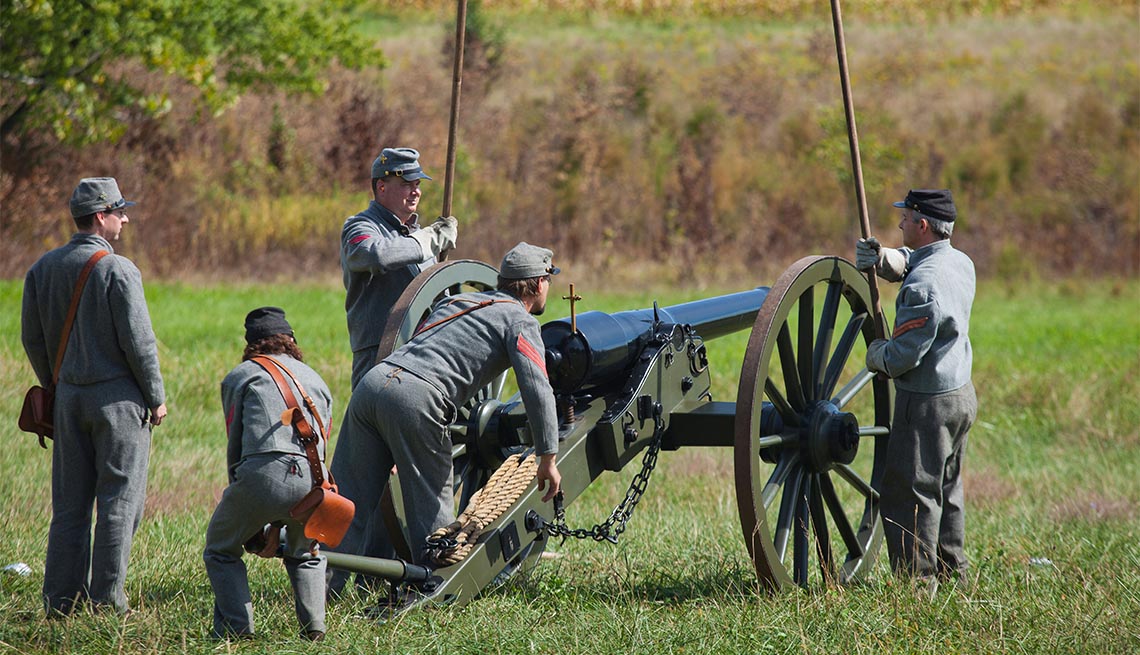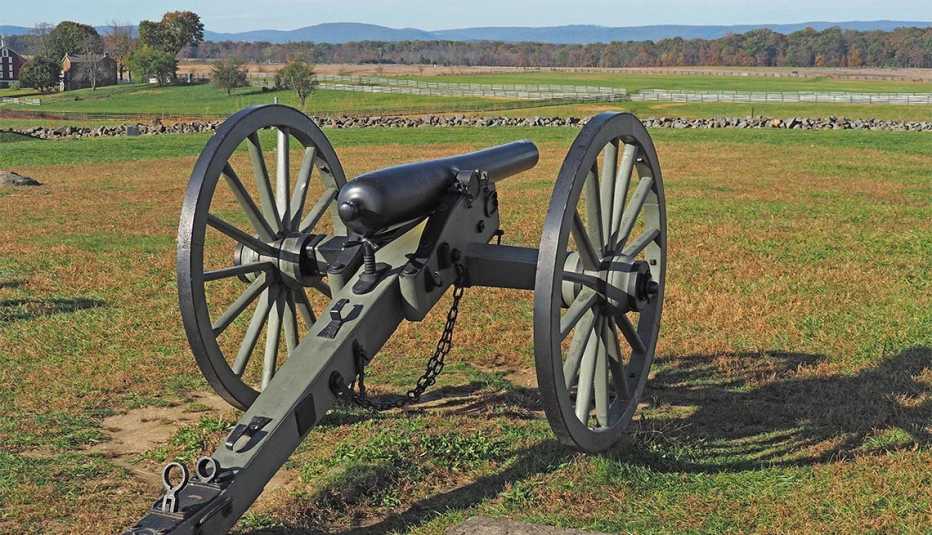Staying Fit
"You'll want to cover your ears,” the Union officer says as he readies his cannon. I step back a few paces as uniformed Civil War re-enactors on the fields of Gettysburg National Military Park in Pennsylvania fire their artillery. The thundering blasts rattle my chest, pound my eardrums and cloud my vision with drifting smoke.
This Gettysburg “Living History” demonstration gives a small sense of the visceral forces at the height of battle here on July 3, 1863, when hundreds of cannons on both Union and Confederate sides simultaneously blasted away across this now peaceful countryside. Three days of this battle resulted in a Union victory costing a staggering 51,000 casualties, changing the course of the Civil War, and of the United States itself.


AARP Membership— $12 for your first year when you sign up for Automatic Renewal
Get instant access to members-only products and hundreds of discounts, a free second membership, and a subscription to AARP the Magazine.
As the soldier-actors sweat in their heavy woolen uniforms to reload the cannon, backed by slouching Union recruits holding long, bayonetted rifles, I gaze around me at some of Gettysburg's 6,000 acres of fields, orchards and rolling hills as a general might do, pondering my best plan of attack to better understand this huge battleground. “People underestimate just how big this park is. If you spend anything less than a long weekend here, you'll be shortchanging yourself,” says Chris Gwinn, Gettysburg's chief of interpretation and education.
Here's a plan to help ensure you get the most out of your Gettysburg experience.
First Stop: the Visitor Center


Plan Your Trip
Location: 1195 Baltimore Pike (visitor center), Gettysburg, Pennsylvania
Getting there: Gettysburg, in rural south-central Pennsylvania, is a reasonable day trip from Baltimore (60 miles southeast) or Washington, D.C. (80 miles south). Harrisburg, Pennsylvania, has the closest airport (50 miles northeast), while Philadelphia's is 140 miles east. An accessible parking lot is available in front of the visitor center, and curbside drop off is also available. When the lot fills up (quickly in high season), shuttle buses service remote lots.
Hours: Park grounds and roads open sunrise to sunset [Note: New hours as of May 15, 2021.]. The visitor center is open daily, 9 a.m. to 5 p.m. through September, with operating hours to be determined for October and beyond (closed on Thanksgiving, Christmas and New Year's Day).
Admission: Park, free. Film, cyclorama and museum, $15 ($14 for those 65 and older); museum only, $9 (no discount).
Best times to visit: Fall, for its cool temperatures, beautiful foliage and smaller crowds. The annual commemorative events each July 1-3 are well worth a visit, too, with “real time” tours following the minute-by-minute progress of the battle each day, punctuated by explosive (literally) Living History re-enactments.
Accessibility: The visitor center is fully accessible, with wheelchairs available at no charge (first-come, first-served). Visitors can also bring their own wheelchairs, walkers and motorized mobility scooters. The park's buses are ADA compliant. Auto-tour stops are flat and paved for easy access, and you'll find five ADA-compliant bathrooms at stops along the route. Some park ranger tours are fully accessible. Note: To improve its accessibility, the Little Round Top area will be undergoing construction and closed from late 2021 through 2022.
You'll do much more than reserve tours, pick up park maps and grab a bite at the café at the impressive Gettysburg Visitor Center. In its 20-minute orientation film, A New Birth of Freedom, you'll learn why the battle was important, how it came about and who fought here, giving deeper meaning to the monument-filled battlegrounds you'll be touring later.
A restored 360-degree, 337-foot long, 42-foot high panorama cyclorama from 1884 puts you virtually in the middle of the battle. “It's like a 19th-century IMAX,” says Gwinn. Now supplemented with dramatic narration, soundtrack and lighting, the cyclorama really gives you a sense of the scale and chaos of the battle.
In a surprisingly large museum, see the actual weapons and uniforms used during those terrible days in 1863. Those artifacts, juxtaposed with photos of humble foot soldiers and their bloodstained letters home, transform dry battle statistics and dates into human terms.
Exploring the Battlefield
Having armed yourself with detailed knowledge of the conflict, you can now fully appreciate the battleground (ideally aided by an audio or personal guide) as you walk, turning empty fields into a moving experience. Get a bird's-eye view of the fields of fire from atop the multiple observation platforms and towers (not wheelchair accessible) that stand over the park's roads.
Near the southern endpoint of the Union battle lines, as you look up at the steep heights of Little Round Top from the killing ground of what became Devil's Den, you'll understand the desperate bravery it took for Confederate troops to charge up those rocky slopes to attack. Atop Culp's Hill on the far northeast edge of Union lines, standing behind 150-year-old entrenchments and breastworks, you can almost feel the dread of Union troops awaiting attack from the dark woods below.
Most powerfully, visiting the Union central position atop the aptly named Cemetery Ridge, it's easy to imagine yourself back on July 3, 1863. Looking over three-quarters-of-a-mile of open pasture, preserved as it was on that fateful day, you'll see the bronze statue of Robert E. Lee on horseback at the edge of a wide line of trees, as if he's about to order the assault. Even in Gettysburg's humid summer heat, you can feel chills imagining 12,000 Confederate soldiers emerging from the woods, whooping the “rebel yell” as they charge.




































































